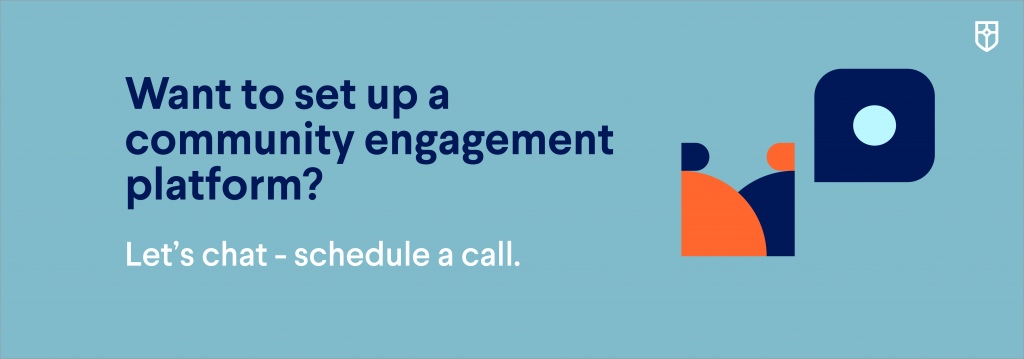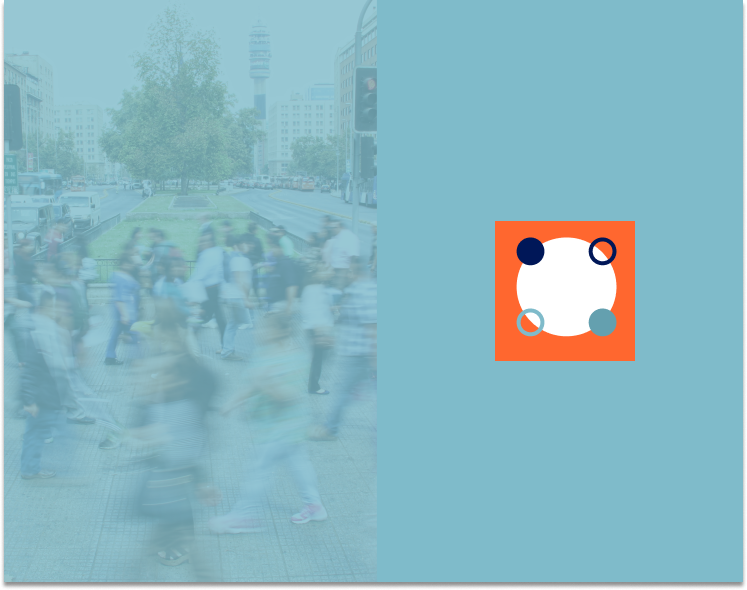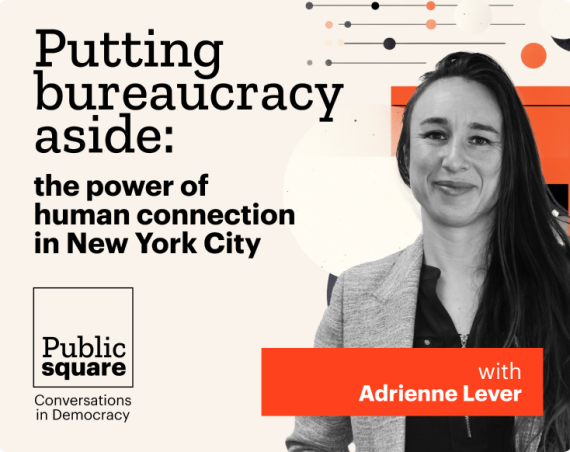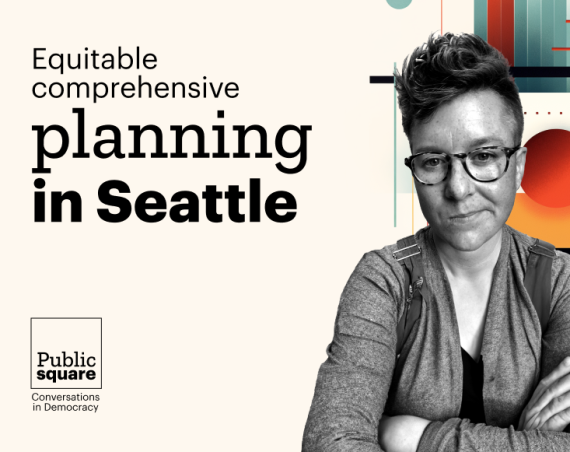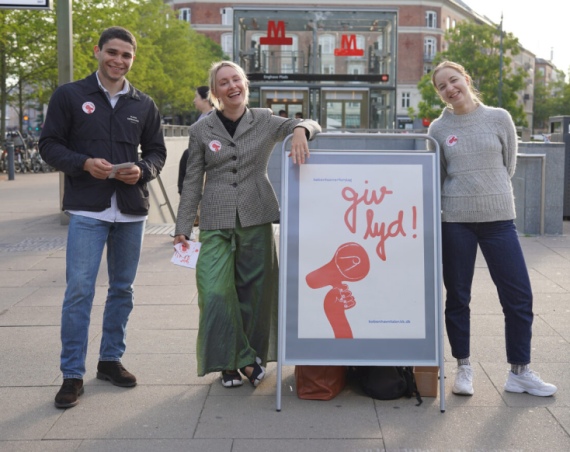In recent years, communities across the globe have voiced a burgeoning need and desire to be directly involved in local decision-making.
As a result, community engagement has become an increasingly crucial topic for local governments. Not just because it plays into the inherent collaborative sentiment of a democratic system, but because it has proven to help administrations define community priorities, make more accurate decisions, and increase buy-in.
But where does one start? When it comes to engaging your community, there are a string of questions to consider and methods to choose from. The very first thing you’ll have to decide on is the ultimate goal of your project. Are you looking to notify your community about a specific decision or an upcoming renovation? Do you need feedback on a predetermined plan? Are you asking for community ideas or opinions? Or are you setting up an actual co-creation process? As a local government, you get to decide the extent to which community engagement results weigh on the final decision. Or, in other terms, where your project lands on the ladder of citizen participation, as developed by Sherry Arnstein in 1969.
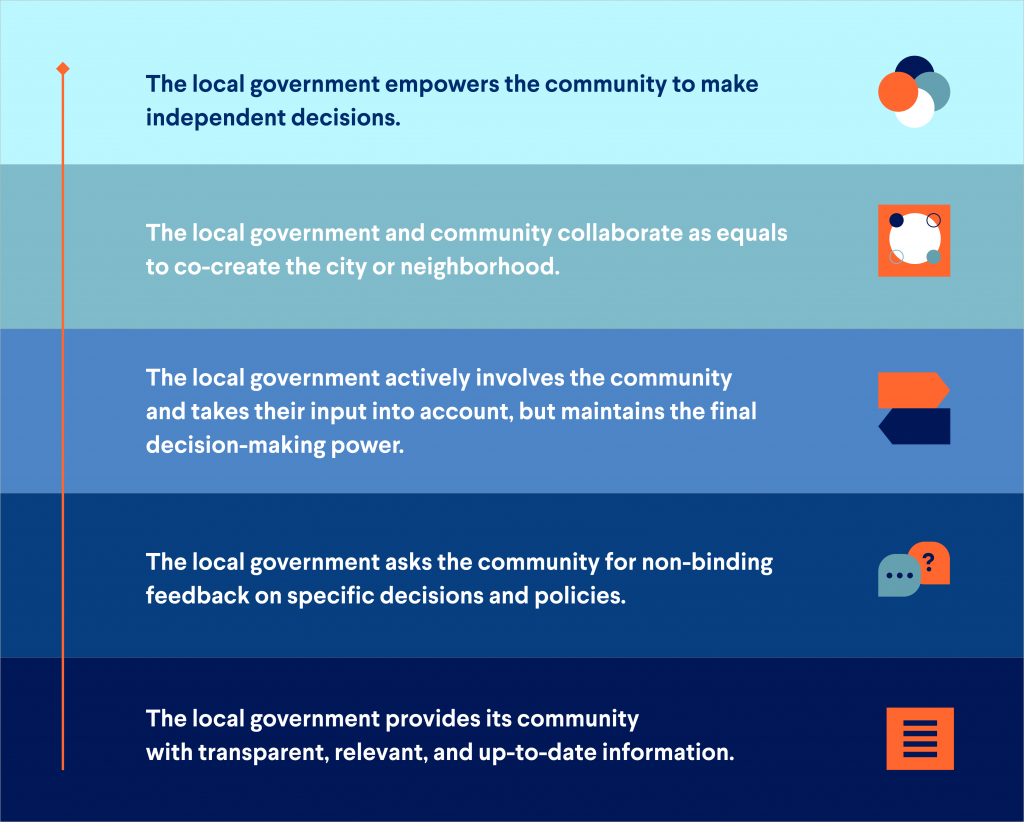
The higher a project lands on the ladder, the more of a commitment or investment it’ll require on your end. On the other hand, it’s essential to remember that higher engagement levels are directly proportional to the degree of trust communities have for their representatives. The more decision-making power you decide to transfer to your communities, the more those same communities will consider your administration legitimately able to make decisions in the name of the common good.
The different levels of the participation ladder
1. Information: a democratic requirement

At the lowest rung of the ladder, we find up-to-date, transparent, and relevant information, which any elected representative naturally owes its constituents. The local administration commits to notifying the community and offering accessible argumentation about forthcoming or implemented decisions or policies through the local press, posters, social media, or updates on the city website.
While the importance of accessible and transparent information cannot be understated, merely stating the facts makes for an undirectional flow of communication that leaves community members unable to negotiate or share their feedback. Local governments have to move beyond this first rung to establish a sense of trust and reap the long-term benefits of community engagement.
The municipality of Rueil-Malmaison (??) used its online participation platform as a central hub to inform the community about business and isolation measures during the COVID-19 pandemic. While the country was in lockdown, this turned out to be a smart way to make vital information easily accessibe to community members—and keep the community connected.
2. Consultation: gauging opinions

A project that makes it to the consultation phase asks the community for feedback, ideas, or opinions on specific topics, decisions, or plans. This usually happens through idea-collection, surveys, offline neighborhood meetings, public hearings, or focus groups.
Consultation can be a surefire way to engage your community and increase buy-in for decision-making—on one crucial condition. It has to lead to actionable to-dos and policy changes. The reason why consultation ranks low on the engagement ladder is that it can be hard to measure to which extent the community input will be taken into account. Suppose the collected input doesn’t genuinely have the power to influence the administration’s course of action. In that case, it serves as little but a smokescreen for making predefined decisions and can hardly be considered engagement at all. When organizing a consultation project, it’s therefore extra important to close the feedback loop and communicate results back to your community.
To shape their priorities for local communities, UNICEF launched a large-scale survey to gauge the issues that matter most to girls between 14 and 18 in Latin-American and Caribbean (LAC) countries. Over 1,400 girls participated. Their input will be used to inform UNICEF’s forthcoming decisions at a regional, national, and institutional level.
3. Involvement: a two-way street

In the involvement rung, community members have a more notable impact on local decision-making. The government actively makes an effort to engage the community through (online) workshops, focus groups, advisory committees, or participatory budgets. Involvement progresses beyond merely gauging opinions—it establishes a two-directional flow of communication and stimulates interaction.
So, what’s the caveat? Well, at this level, the full authority still lies with the government. While the administration may actively engage its community and genuinely consider the given input, the final decision is theirs to make.
Lancaster, PA (??) involved its communities in a difficult conversation on public safety and policing. They organized listening sessions on the recruitment of the City’s next Chief of Police, making sure the community could weigh in on the hiring process. On top of that, they also established a Community and Police Working group with the power to deliberate on issues such as the use of force, civilian complaint forms, and body cameras.
4. Co-creation: working together as equals

In the fourth rung of the engagement ladder , decision-making power is shared (almost) equally between the local administration and the public. Community members and elected representatives work together to find feasible solutions, draft action plans, and implement projects. This is often done through joint policy boards or community groups.
In London (??), the borough of Newham has launched a 12-month cycle of community assemblies on a range of local challenges. 360,000 community members were given the opportunity to help set priorities, draft a shared vision for the neighborhood, and directly influence local decision-making. Over 500 community members have signed up to co-create their neighborhood.
5. Empowerment: communities push the needle forward

The highest level of community engagement occurs when the final responsibility for decision-making lies with communities rather than governments. In this scenario, community members have a veto right, which means the administration must take the community’s priorities into account. This degree of community engagement is rarely reached in practice, as it requires significant resources and a sense of total trust.
While it might not be a pure example of this fifth rung, Stirling, Scotland (??) comes pretty close. By including petitions as an engagement option, the local community can share ideas and proposals which follow a clear roadmap of consideration and (potential) approval. So far, two community-led ideas have been placed on the council’s agenda.
Community engagement can be implemented at various levels, and with several aims and outcomes. While the 5 rungs of the ladder each have their own purposes and strengths, they also each have their own nuances and complexities. To combine feasible organization with the long-term benefits of involvement and co-creation, it pays not to stick to just one level of engagement.
Ready to engage your community?
